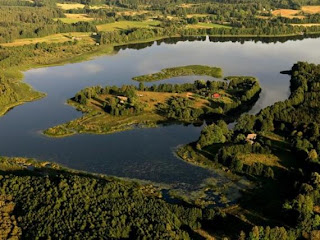Lithuania, officially the Republic of Lithuania is a country in Northern Europe, the southernmost of the three Baltic states. Situated along the southeastern shore of the Baltic Sea, it shares borders with Latvia to the north, Belarus to the southeast, Poland, and the Russian exclave of Kaliningrad to the southwest. Across the Baltic Sea to the west lie Sweden and Denmark. Its population is 3.28 million. Its capital and largest city is Vilnius.
During the 14th century, Lithuania was the largest country in Europe: present-day Belarus, Ukraine, and parts of Poland and Russia were territories of the Grand Duchy of Lithuania. With the Lublin Union of 1569, Poland and Lithuania formed a new state, the Polish–Lithuanian Commonwealth. The Commonwealth lasted more than two centuries, until neighboring countries systematically dismantled it from 1772 to 1795, with the Russian Empire annexing most of Lithuania’s territory. In the aftermath of World War I, Lithuania’s Act of Independence was signed on 16 February 1918, declaring the re-establishment of a sovereign state. Starting in 1940, Lithuania was occupied first by the Soviet Union and then by Nazi Germany. As World War II neared its end in 1944 and the Nazis retreated, the Soviet Union reoccupied Lithuania. On 11 March 1990, Lithuania became the first Soviet republic to declare independence. Prior to the global financial crisis of 2007–2010, Lithuania had one of the fastest growing economies in the European Union. Lithuania is a member of NATO, the Council of Europe, and the European Union. Lithuania became a full member of the Schengen Agreement on 21 December 2007.[7] In 2009, Vilnius was the European Capital of Culture and Lithuania celebrated the millennium of its name. Lithuania’s climate, which ranges between maritime and continental, is relatively mild. Average temperatures on the coast are -2.5 °C in January and 16 °C in July. In Vilnius the average temperatures are -6 °C in January and 16 °C in July. Simply speaking, 20 °C is frequent on summer days and 14 °C at night although temperatures can reach 30 or 35 °C. Some winters can be very cold. -20 °C occurs almost every winter. Winter extremes are -34 °C in coastal areas and -43 °C in the east of Lithuania.








































0 comments:
Post a Comment